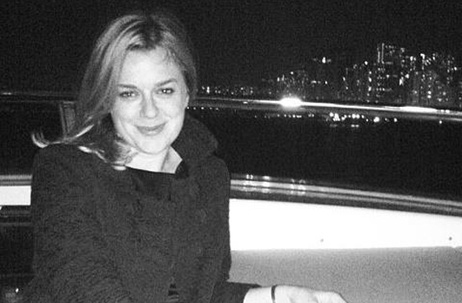
Gabby’s Word 16 May 2013

Bear with me, I’m about a year late but I finally got round to reading ‘Mad Women…The other side of life on Madison Avenue in the 60s and beyond’. Written by legendary copywriter, Jane Maas (‘the real Peggy Olsen’) and based on her experiences of New York advertising in the 60s and 70s, it’s a colourful collection of memories and interviews. And it paints a thoroughly entertaining picture of the period and the role of women within the industry.
Maas was a creative director at Ogilvy & Mather and Wells Rich Greene, and president of Earle Palmer Brown. She was Advertising Woman of the Year, won 47 creative awards, has written five books, was happily married for 45 years and raised two children – with the help of her beloved housekeeper, Mabel.
What work might you recognise? There’s a lot, but most famously she ran the iconic ‘I love New York’ campaign. A powerful woman – extremely brave and fierce – one might assume that she was also a tad scary, but in this highly entertaining memoir of a by-gone era, she comes across as a warm, frank and happy person. This is a person that loved her job and loved the people that worked around her.
Yes, she does talk about some pretty grotty experiences and the chauvinism that existed during that period, but it’s apparent that David Ogilvy was not only a great mentor and boss to her, but eventually became a good friend. In fact, her worst boss seems to have been a woman, Leona Helmsley, who Maas set up her own short-lived agency with and by whom it appears she was treated very badly. And of course, there are the recollections of lecherous superiors trying to get into her knickers. She also refers to the legendary O&M Boat Ride where no virgin came back intact; it’s the anecdote that made me buy the book at Singapore airport – heck, even Maas admits that sex sells. There are a fair few references to men having extra-curricular fun outside of their marital bed… But reading between the lines, I don’t sense anger or hostility as she describes these scenes and their protagonists. In fact, Maas keeps solely to the task of writing about what happened and resists the urge to make this a feminist crusade.
Neither does she exonerate the perpetrators of their crimes; she admits to her own participation in the stereotyping of women during these two decades. In her chapter ‘Sex in Advertising’, she discusses winning the NOW (National Organisation for Women) award for ‘Most Obnoxious Commercial of the Year Depicting a Woman’ not once, but twice. The first was for her Dove-for-dishes work and the second was her famous campaign for Maxim coffee with Patricia Neal. One of my favourite recollections would have to be her experiences with the author and then husband of Pat, Roald Dahl… David Ogilvy referred to him as a ‘shit’.
In her last chapter, Maas discusses the guilt working mothers have and the conundrum’s of balancing a career and a child. Her main conclusion is that the anger experienced by women in the 60s remains to this day. It surprised her that in this day and age “almost every one of them is guilty, frustrated, overwhelmed and yes, angry. They agree that, overall, husbands are more helpful and working conditions more flexible than they were fifty years ago, but when the chips are down, they ask, who stays home with the sick child?” She asks “have we come such a long way?” Comparing her notes from the interviews she conducted Maas acknowledges that women today use “almost exactly the same words” as those of the 60s. Overall, however, conditions and opportunities are far more abundant and available than they were for women fifty years ago and that the sexist narrow-mindedness of that period of time has more or less been left behind (and if it hasn’t, then at least we have HR to, fingers crossed, reprimand the insulter).
Panty-hose; drinking in the office; client entertainment; taking sea-planes to meetings; pot-smoking creative departments; David Ogilvy’s stern memo ordering female staff not to wear pantsuits; the production sets of the 60s; DDB’s revolutionary VW ‘Think Small’ print campaign and its effect on the industry; ashtray after ashtray of cigarette butts; convenience food providing freedom to women; the outrageous demands of talent and clients. They didn’t call it the swinging 60s for nothing. The excitement coupled with Maas’ discussion of balancing home, work and husband makes ‘Mad Women’ a must-read book for both men and women. I thoroughly enjoyed it and thoroughly recommend it.













